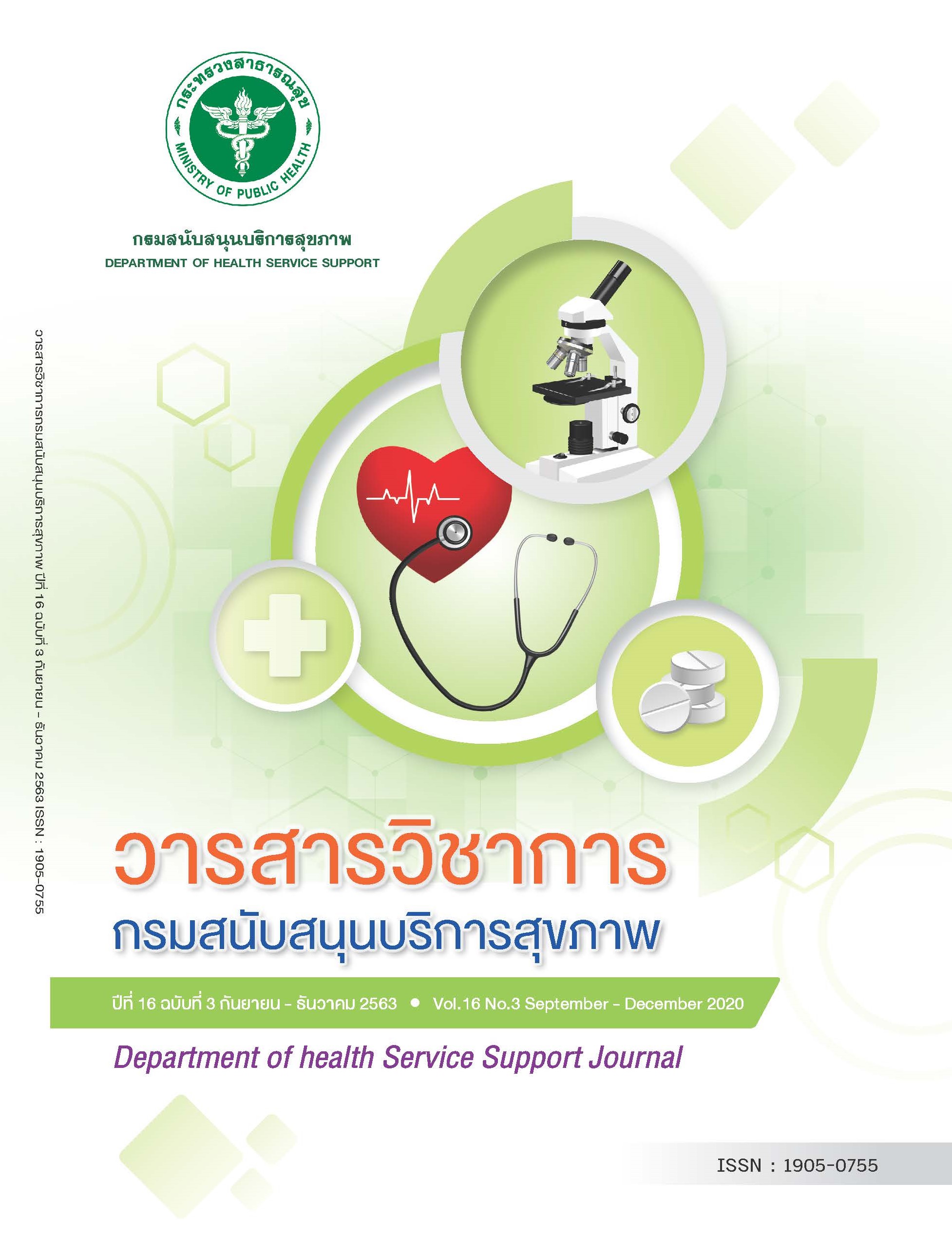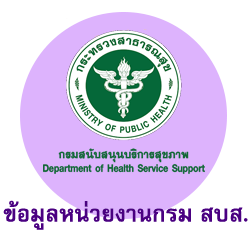การคัดกรองภาวะพร่องไทรอยด์ฮอร์โมนแต่กำเนิด สถาบันสุขภาพเด็กแห่งชาติมหาราชินี (ปี พ.ศ.2550-2561)
คำสำคัญ:
การคัดกรองภาวะพร่องไทรอยด์ฮอร์โมนแต่กำเนิด, Thyroid stimulating hormone, levothyroxineบทคัดย่อ
การคัดกรองภาวะพร่องไทรอยด์ฮอร์โมนระดับชาติได้เริ่มดำเนินการในประเทศไทยตั้งแต่ปีพ.ศ.2539 สถาบันสุขภาพเด็กแห่งชาติมหาราชินีได้เริ่มตรวจคัดกรองในปีพ.ศ.2538 ความครอบคลุมและการติดตามผู้ป่วยมาตรวจยืนยันยังมีปัญหาที่ต้องพัฒนา การศึกษาวิจัยครั้งนี้มีวัตถุประสงค์ เพื่อศึกษาอุบัติการณ์ของการเกิดภาวะพร่องไทรอยด์ฮอร์โมนของทารกที่เกิดที่โรงพยาบาลราชวิถี ในช่วงระยะเวลาตั้งแต่ 1 ตุลาคม พ.ศ.2550 - 30 กันยายน พ.ศ.2561 และพัฒนากระบวนการคัดกรองภาวะพร่องไทรอยด์ฮอร์โมนในสถาบันสุขภาพเด็กแห่งชาติมหาราชินี โดยทำการศึกษาข้อมูลจากเวชระเบียนของทารกแรกเกิด จำนวน 67,801 คน วิเคราะห์หาอุบัติการณ์ และศึกษากระบวนการคัดกรอง การวินิจฉัย การรักษา และติดตามอย่างต่อเนื่อง เปรียบเทียบแนวโน้มของการเกิดภาวะพร่องไทรอยด์ฮอร์โมนที่ตรวจพบในสถาบันสุขภาพเด็กแห่งชาติมหาราชินี
ผลการศึกษา การตรวจคัดกรองภาวะพร่องไทรอยด์ฮอร์โมนแต่กำเนิดในทารกแรกเกิด โรงพยาบาลราชวิถี ในระยะที่ทำการศึกษา 12 ปีนี้ มีทารกได้รับการตรวจคัดกรอง 67,323 คน คิดเป็นอัตราความครอบคลุมร้อยละ 99.3 ทารกที่เข้าเกณฑ์การเจาะเลือดซ้ำ (TSH >25 ไมโครยูนิตต่อลิตร) 416 ราย (ร้อยละ 0.62) ติดตามทารกมาเจาะเลือดซ้ำได้ 405 ราย (ร้อยละ97.4) และพบผู้ป่วย 53 รายคิดเป็นอุบัติการณ์ของภาวะพร่องไทรอยด์ฮอร์โมนแต่กำเนิดเท่ากับ 1: 1,270 ของทารกเกิดมีชีพ อายุทารกที่สามารถติดตามมาตรวจเลือดยืนยันเฉลี่ย 12.63 วัน อายุเฉลี่ยของทารกที่ได้รับยา levothyroxine 14.8 วัน โดยมีผู้ป่วยที่ได้รับยาภายใน 14 วันร้อยละ 50.9 มีผู้ป่วยที่รักษาไม่ต่อเนื่อง 18 ราย (ร้อยละ 33.96) เป็นผู้ป่วยขาดการติดต่อหลังมาตรวจยืนยัน 7 ราย (ร้อยละ 13.2) ขอไปรักษาใกล้บ้านแล้วติดต่อไม่ได้ 7 ราย (ร้อยละ 13.2) เสียชีวิตด้วยโรคปอดอักเสบรุนแรงหลังการรักษา 1 ปี 1 ราย (ร้อยละ 1.89) รักษาถึง 2 ปีแล้วขาดการติดต่อ 3 ราย (ร้อยละ 5.7) ในช่วงปี 2550-2558 มีผู้ป่วยได้รับการตรวจ thyroid scan หลังการรักษาครบ 3 ปีจำนวน 22 ราย พบความผิดปกติ 11 ราย (ร้อยละ 50.0) เป็น ectopic thyroid 7 ราย (ร้อยละ 31.82) absence of thyroid gland 3 ราย (ร้อยละ 13.27) และ thyroid hypoplasia 1 ราย (ร้อยละ 4.54) normal thyroid 11 ราย (ร้อยละ 50.0) ได้รับการวินิจฉัยเป็น transient hypothyroidism ในปีพ.ศ. 2559 มีแนวทางการวินิจฉัยโรคพร่องไทรอยด์แต่กำเนิดจากชมรมต่อมไร้ท่อเด็กแห่งประเทศไทย ผู้ป่วยจึงไม่ได้รับการส่งตรวจ thyroid scan
การตรวจคัดกรองภาวะพร่องไทรอยด์ฮอร์โมนแต่กำเนิดแม้จะเป็น โครงการระดับชาติแล้ว แต่ยังมีผู้ป่วยที่ขาดการติดตามการรักษาอยู่ไม่น้อย ผู้ปฏิบัติงานจึงควรสร้างความตระหนักรู้ให้ทุกภาคส่วน บุคลากรทางการแพทย์ที่อยู่ในพื้นที่ เช่น อาสาสมัครประจำหมู่บ้านน่าจะมีบทบาทในการติดตามทารกให้มารับการรักษา รวมถึงผู้ปกครองก็มีส่วนสำคัญในการนำผู้ป่วยมารับการรักษาอย่างต่อเนื่อง
เอกสารอ้างอิง
Gengkatekij Supawan (2550) Thyrotropin screening for congenital hypothyroidism in Queen Sirikit National Institute of Child Health [Diploma thesis]. Bangkok: Queen Sirikit National Institute of Child Health. (in Thai).
Jirapiti Ukrit (2561). Three-year follow-up of abnormal TSH level in newborn screening in Chiangrai Prachanukroh Hospital During year 2011-2014. Thai journal of paediatrics. 57: 25-31. (in Thai).
Kupatanon Chularuk, Siraporn Sawadhiworn, Prapasri garpjun. (2561) Congenital hypothyroidism screening in Thailand. Journal of Health Systems Research. 12: 452-5. (in Thai).
Pangkanon Suthipong. (2549). Thyroid gland dysfunction. Bangkok: Queen Sirikit National Institute of Child Health. (in Thai).
Pinyopornpanish Preecha. (2558). Screening Program for Congenital Hypothyroidism in Sukhothai Hospital. Journal of Preventive Medicine Association. 5: 120-7. (in Thai).
Royal College of Pediatricians of Thailand. (2557).Guideline for diagnosis of congenital hypothyroidism in Thailand. Bangkok: RoyalCollege of Pediatricians of Thailand. Retrieved April 16, 2020 from http://www.thaipediatrics.org/Media/media-20161129115405.pdf.(in Thai).
Siriwimolphan Suparat, Thongmesi Somluk. (2556).Neonatal hypothyroidism screening in Cholburi hospital during year 2549-2552. Thai journal of paediatrics. 52: 27-35 (in Thai).
Songkunatham Saranya (2552). Neonatal hypothyroidism screening in Srisakate hospital during year 2546-2550. Thai journal of paediatrics. 48: 34-41. (in Thai).
Bongers-Schokking JJ, Koot HM, Wiersma D, Verkerk PH, de Muinck Keizer Schrama SM. (2000) Influence of timing and dose of thyroid hormone replacement on development ininfants with congenital hypothyroidism.J Pediatr. 136: 292-7.
Churesigaew S, Ratrisawasdi V, Thaeramanophab S. (2002). Thyrotropin screening for congenital hypothyroidism in Queen Sirikit Institute of Child Health, Thailand (during year 1995–2000). J Med Assoc Thai. 85: 782–8.
Delange F. (1999) Neonatal thyroid screening as a monitoring tool for the control of iodine deficiency. Acta Paediatr Suppl. 88: 21-4.
Fisher DA. (1983). Second International Conference on Neonatal Thyroid Screening: progress report. J Pediatr, 102, 653-4.
Gruters A. et al, (2002) Long-term consequences of congenital hypothyroidism in the era of screening programmes. Best practice & research Clinical endocrinology and metabolism 16: 369-82.
UnaChak K, Tanpaiboon P, Pongprot Y, et al. (2008). Thyroid functions in Children with Down’s syndrome. J Med Assoc Thai. 91: 56-61.
Verkerk PH, Buitendijk SE, Verloove-Vanhorick SP (1993). Congenital hypothyroidism screening and the cutoff for thyrotropin measurement: recommendations from the Netherlands. Am J Publ Health, 83, 868-71.
ดาวน์โหลด
เผยแพร่แล้ว
วิธีการอ้างอิง
ฉบับ
บท
การอนุญาต

This work is licensed under a Creative Commons Attribution-NonCommercial-NoDerivatives 4.0 International License.



